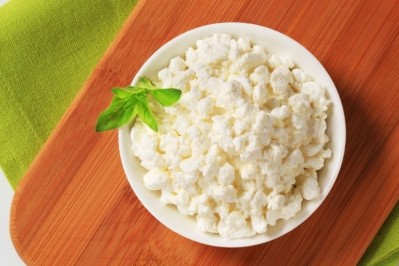Two researchers from the Clemson University Department of Food, Nutrition and Packaging Sciences carried out a systematic review of the academic literature covering some of the major cheese packaging and labeling trends and innovations in recent years. Rounding-up conclusions from various academic papers, many of which aren’t free to access outside the academic space, the authors Ruperth Andrew Hurley and D. A . Hutchins summarize the role of packaging and labeling as well as the importance to adapting to new consumer trends; how factors such as grocery store displays and shipping policies influence buying decisions, and more.
“The objectives of this study were to collect an array of articles and research relating to retail cheese packaging, labeling, and consumer trends and gather global cheese packaging and labeling innovation to provide the cheese industry with a summary resource to potentially combine technologies and findings to better align with United States market trends within the scope of marketplace and consumption to increase retail cheese sales,” the authors stated.
Seeing is believing
While label claims and branding choices are important to attracting consumers’ attention, packaging shapes are key to ensuring those items are actually visible to shoppers, the reviewers found. Changing the shape of a tub from cylindrical to oblong or rectangular could prevent a product from being rotated or misoriented, while the uniformity that a rectangular package offers and its stacking ability could improve quality perceptions in consumers. “When cylindrical, the product could easily be rotated and misoriented resulting in a misaligned logo and primary display because, being a circle, the product physically aligns in any rotation such as the back or side displaying outwards rather than the front principal display panel… However, with an oval- or rectangle-shaped package, the sides easily line up correctly and display the desired side of the package as the front,” the authors noted citing a Paper, Film and Foil Converter publication.
The paper also rounds up several academic articles suggesting that printed imagery, such as images of suggested food pairings, could increase consumers’ willingness to pay and boost product acceptance. While displaying brand logo ‘makes a product recognizable…and is vital for repurchase’, the authors found that brand importance can vary greatly. In the US, shoppers were more likely to favor taste and a lower price point ahead of branding, while Italian shoppers – mainly those who were middle-aged with children – valued brand over price, organic, lactose-free and PDO claims. Brazilian consumers aged over 31 meanwhile valued information and affordability more than branding.
“It is apparent that culture likely influences how consumers value cheese, and, in result, should be considered when designing cheese packaging and labeling,” the reviewers concluded.

Perceptions towards transparent and opaque packaging also varied, though see-through plastics that allowed shoppers to see the product were largely favored. Reviewing the available evidence, the authors found that a focus group of Spanish consumers would prefer transparent packaging for cheese rather than paperboard packaging. In Egypt, older consumers with children as well as college-educated women also preferred transparent plastic over paperboard, but high-earning male consumers stated they didn’t have a preference.
The authors also highlighted how General Mills leveraged transparent tub and screw cap lid packaging – similar to ice cream tubs – to display their new flavor options of cottage cheese in 2016.
“Cheese companies have continued to put forth effort to make their products easily visible while also using less plastic,” the reviewers stated.
Some manufacturers are resorting to new technologies to grab shoppers’ attention and maximize the use of label space. For example, Canadian cheesemaker Bothwell Cheese included a QR code printed on-pack that would trigger an augmented reality experience on the shopping floor – by scanning the code with their phones, a hologram of a cheese chef appeared, along with a discount coupon.
From high-protein to snackable cheese
The reviewers also summarized key conclusions from academic resources dedicated to packaging trends and opportunities for healthy cheese, dairy-free options and snacking. According to the authors, innovating with cheese formulations – for example, by creating shelf-stable products such as cheese puffs – could allow for displaying cheese products outside the fridge aisles and onto ambient shelves.
Citing Canning research from 2021, the authors noted that crisps “were considered the hottest emerging trend by the director of the Cheese Makers’ Association in Wisconsin. Adjusting how cheese is formulated, and displaying cheese in a unique way may capture attention of potential new customers.”
Leveraging health claims and appealing to consumers who favor natural products also presents opportunities. The reviewers found evidence that healthfulness is more important than price for more than half of US consumers, with natural cheese sales growing more than processed cheese according to research from 2014 and 2016. (Based on the latest USDA cheese consumption data, the consumption of American type cheese remained behind that of other types of cheeses in 2023, ed.)
“Not only is natural cheese desirable, but claiming a product to be natural, although not fully legally defined in the United States as of 2023, is desirable to many consumers,” the authors summarized. “Cheese companies choosing to not produce products deemed as natural may result in a hampering of cheese sales.”
High-protein dairy products offer another avenue to appeal to health-conscious consumers, based on trends that the authors reviewed. As far back as 2015, the reviewers found evidence that protein content in dairy could influence purchasing decisions, with 57% of US shoppers stating they were trying to get as much protein as possible in their diet. While yogurt and yogurt beverages have dominated the high-protein dairy space, cheese options have also emerged, particularly in cottage and block cheese where fat content is decreased to result in higher protein concentrations. However, it’s the cottage cheese segment where the authors of the review deemed most promising.

They found that protein claims – which in 2013 were only highlighted on 0.5% of cheese packaging as a unique innovation – are more common on Greek yogurt packaging. But, cottage cheese ‘has a similar high-protein, low-lactose nutritional profile’ as well as ‘exceptionally high protein content’ compared to other cheeses, yet this was rarely advertised on-pack, the authors found. “There are opportunities to communicate the protein content or unique flavor parings of cottage cheese which may lead to increased sales,” the authors summarized, citing Tong research from 2013.
Formats, from sliced to cream cheese, also influence purchasing decisions according to the review. In the US, shredded, chunk, sliced and stick cheeses made up 90% of US sales in 2017, the authors found.
“Unsurprisingly, attention has been given to improving the packaging of shredded cheese since this cut format is so popular,” the authors stated, adding that anti-caking agents and advancements in manufacturing equipment have improved the range of cheese shredding and grating. Using anti-caking agents could hide pitfalls, however. “A study shows that the use of an anti-caking agent for shredded cheese does not negatively affect the sensory acceptability of cheddar cheese when used up to 3% but does make an impact when used at higher concentrations,” the researchers summarized. “Although anti-caking is added onto shredded cheese for increased functionality, consumers may notice it physically on the product, or perhaps notice it as a listed ingredient printed on the packaging.”
The review was recently published in the Journal of Dairy Science and available in full via the link below.
Source:
A systematic review of articles influencing United States retail cheese packaging, labeling, and market trends related to cheese in the marketplace and cheese during consumption
Authors: R. Andrew Hurley, D. A. Hutchins
Published: Journal of Dairy Science, 10 April 2024
DOI: 10.3168/jds.2023-23977
